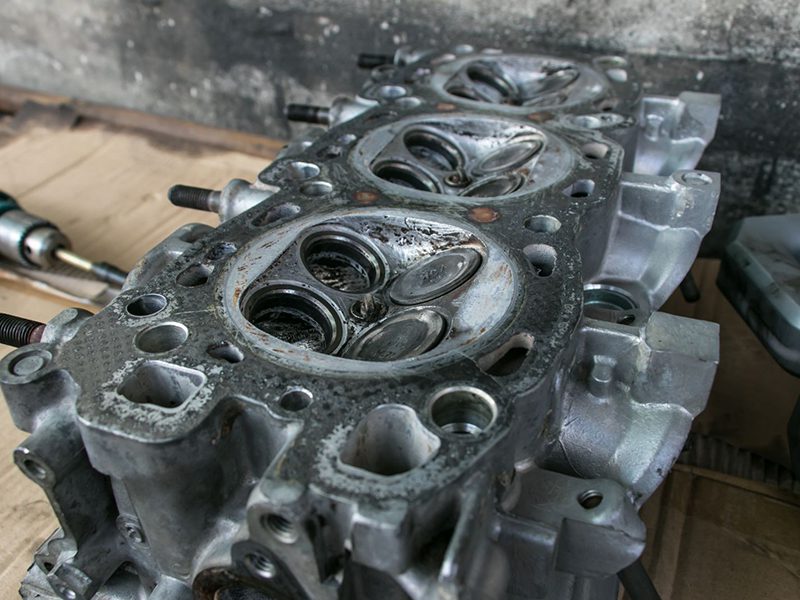The cylinder head is an essential component of your engine. A cracked cylinder head can lead to significant engine issues if left unchecked. In this article, we’ll discuss the common symptoms of a damaged cylinder head, why prompt action is essential, and what repair costs you can expect.
Cylinder Head Function and Importance
The cylinder head rests on top of the engine block, sealing the combustion chamber. It manages the intake of air and fuel, expels exhaust gases, and houses crucial components like the intake and exhaust valves, spark plugs, and camshafts.
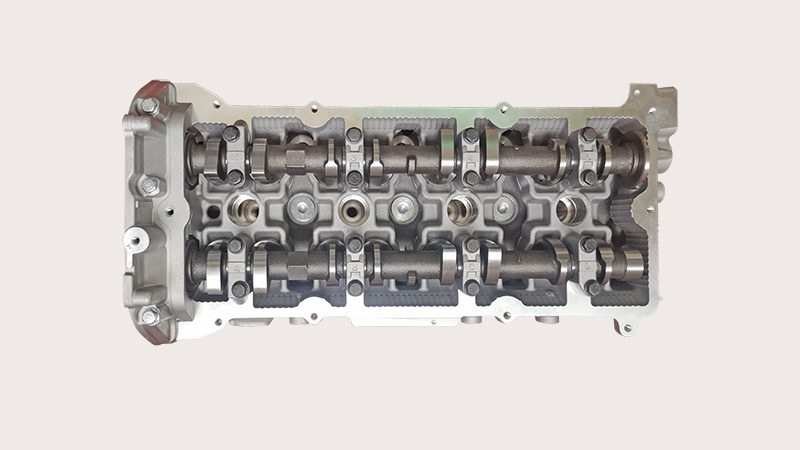
Typically made of either cast iron or aluminum, cylinder heads offer distinct advantages based on the material used. Cast iron heads are prized for their durability and resistance to cracking under high temperatures, making them ideal for heavy-duty engines.
Diesel heads, for example, are commonly made from cast iron due to these properties. In contrast, aluminum cylinder heads are lighter and provide superior heat dissipation, making them the preferred choice for high-performance or fuel-efficient engines.
The cylinder head plays a vital role in ensuring efficient engine performance by regulating compression and combustion, while also overseeing the flow of cooling fluids to prevent overheating. Without it, the engine would struggle to operate effectively.
Causes of Cylinder Head Cracking
There are several reasons for cylinder heads cracking. Overheating can weaken the metal due to extreme high temperatures, while engine stress from high RPMs or heavy use adds additional strain. Poor maintenance, such as neglecting coolant levels or failing to replace worn seals and gaskets, can also contribute to the problem.
Over time, these issues can lead to cylinder head failure, resulting in coolant leaks, engine misfires, and, in severe cases, complete engine failure.
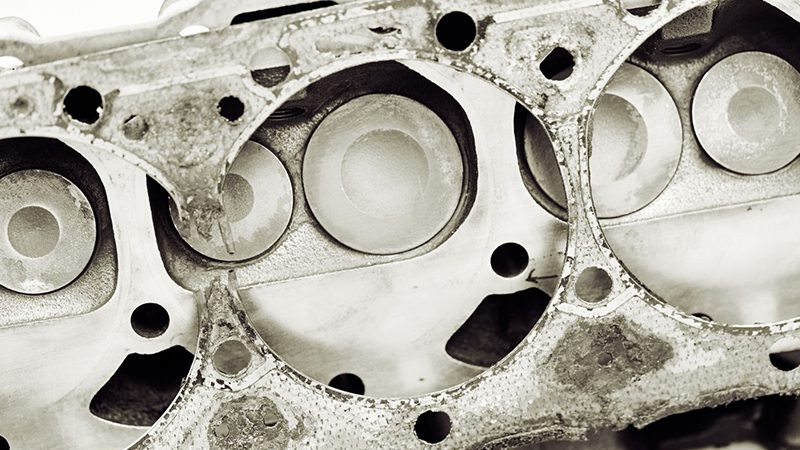
Symptoms of a Cracked Cylinder Head
1. Overheating Engine
A persistently overheating engine is one of the most noticeable signs of a cracked cylinder head. This occurs when coolant escapes through the crack, disrupting the engine’s ability to regulate its temperature. As a result, the engine can quickly overheat, leading to further damage if not addressed promptly.
2. White Smoke from the Exhaust
If you notice white smoke billowing from the exhaust, it’s a strong indicator that coolant is leaking into the combustion chamber. This usually happens when the crack allows coolant to mix with the engine’s fuel, causing the smoke as it burns off. It’s not just a visual sign of trouble—it’s a clear warning that your engine may be on the verge of serious failure.
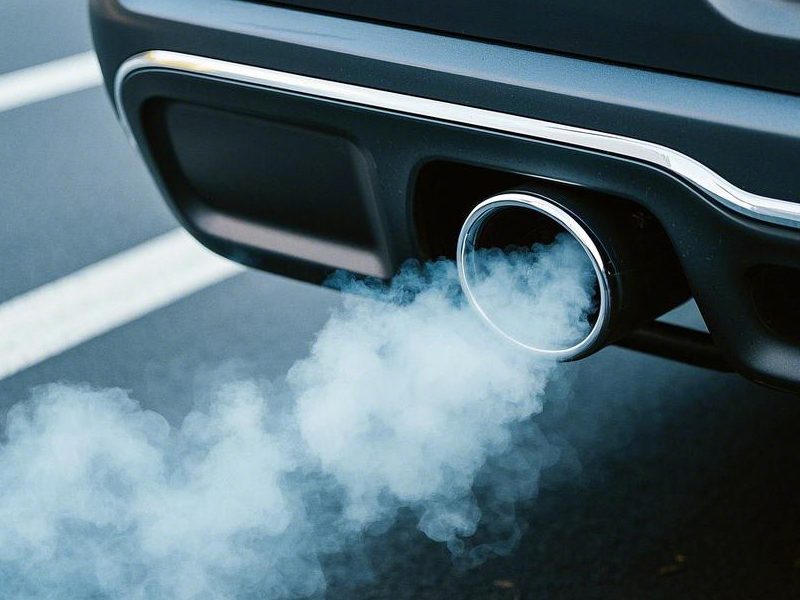
3. Loss of Engine Power
A loss of engine power or rough idling is another symptom. A cracked head can cause a loss of compression in the engine, which leads to a decrease in power and an uneven engine performance. You may feel your vehicle struggling to accelerate or running rough, especially when idle.
4. Coolant in the Oil
When coolant mixes with the engine oil, the resulting mixture turns the oil into a milky, frothy substance. This is a serious issue as it compromises the oil’s ability to lubricate and protect engine components, accelerating wear and increasing the risk of catastrophic engine damage.
5. Visible Cracks or Leaks
Upon a careful visual inspection of the cylinder head, you may notice cracks or coolant leaks around the head’s surface. These cracks can appear in the metal itself, and coolant stains may be visible around the engine block or cylinder head. If you spot any signs of leaking fluid, it’s important to have the engine checked immediately to prevent further harm.

6. Bubbling in the Radiator
Another telltale sign of a cracked head is bubbling in the radiator. This occurs when combustion gases, escaping from the crack, enter the cooling system. The bubbles in the radiator are a clear indication that the engine’s combustion process is being disrupted, and immediate attention is needed to avoid significant engine damage.
How to Diagnose a Cracked Cylinder Head
1. Visual Inspection:
The first step is to carefully inspect the engine for any obvious signs of damage. Look for visible coolant leaks, often appearing as puddles or stains around the cylinder head. Pay attention to any cracks or discoloration, which can signal overheating or stress. A visual inspection can provide the first clues about the extent of the damage.
2. Compression Test:
A compression test is one of the most reliable methods for diagnosing a cracked head. By measuring the engine’s compression levels, this test can identify any loss of pressure caused by cracks in the cylinder head or faulty gaskets. A significant drop in compression is a strong indicator of a problem that needs immediate attention.
3. Cooling System Pressure Test:
A cooling system pressure test helps pinpoint coolant leaks or combustion gas leaks. By pressurizing the cooling system, this test reveals whether coolant is escaping from the cylinder head or if combustion gases are entering the cooling system, both of which are signs of a cracked head. This test is crucial for identifying hidden damage that may not be immediately visible.
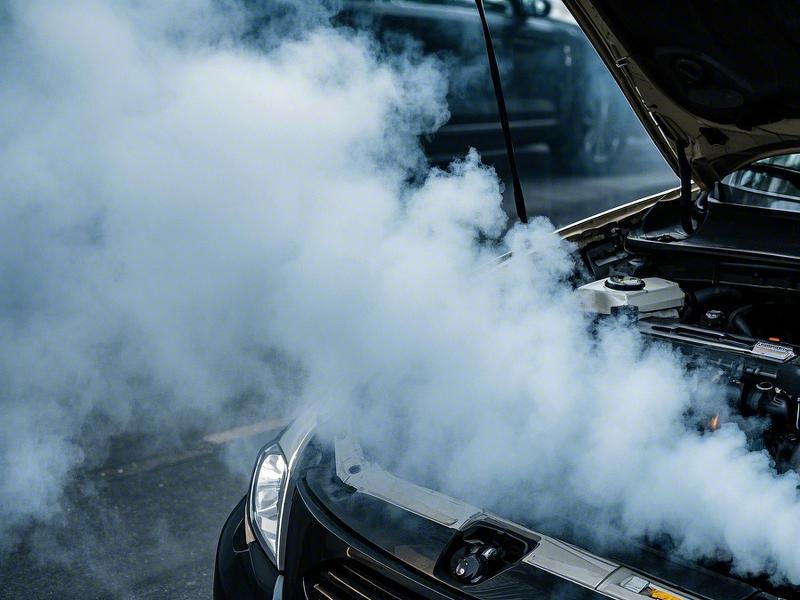
Cracked Cylinder Head Repair Options
1. Repairing a Cracked Cylinder Head:
For minor cracks, repair options may include welding, resurfacing, or using specialized sealants and products designed to restore the integrity of the cylinder head. These methods can be effective for small, superficial cracks and may help extend the life of the engine, but they require careful assessment to ensure the repair will hold up under pressure and heat.
2. Cylinder Head Replacement:
In cases where the damage is extensive or repairs would be too costly, replacing the entire cylinder head may be the more practical option. Replacing the head ensures that the engine’s performance is restored to optimal levels and can prevent ongoing issues, though it typically comes at a higher upfront cost. In many cases, this option is more reliable in the long run.
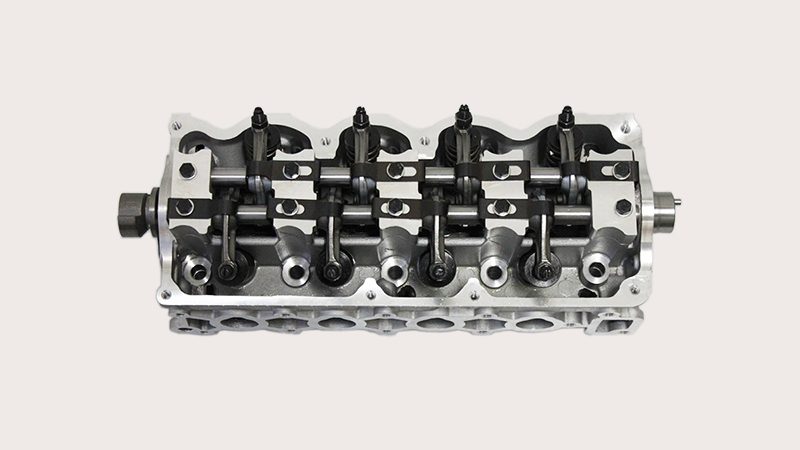
And if you’re working with a tighter budget, remanufactured cylinder heads can be a great alternative without compromising on quality.
3. DIY Repairs vs. Professional Help:
When deciding whether to attempt DIY repairs or hire a professional mechanic, it’s important to weigh the pros and cons. DIY repairs can save money, but they require specialized knowledge, tools, and time. Improper repairs can lead to further damage, costing more in the end.
On the other hand, a professional mechanic has the expertise and equipment to accurately diagnose and repair the issue, though their services can be costly. Ultimately, the decision depends on the severity of the damage and your confidence in handling engine repairs.

Cracked Cylinder Head Repair Cost
1. Cost Breakdown for Repair:
Repairing a cracked cylinder head can vary widely depending on the extent of the damage. On average, the cost includes parts, labor, and any additional repairs. For minor cracks, you may spend anywhere from $500 to $1,500, covering the cost of welding, resurfacing, or sealing. However, if more extensive work is needed, such as replacing head gaskets or fixing related engine components, the cost can climb higher.
2. Factors Affecting the Cost:
Several factors impact the final price of repairs. The extent of the damage plays a significant role; minor cracks may be less expensive to fix, while larger cracks or deeper damage may require more extensive work. Labor rates can fluctuate based on your location and the intricacy of the repair.
The type of engine also matters—more complex or rare engine models may require specialized parts, which can increase costs. Finally, whether you’re opting for a repair or a replacement can make a big difference in the overall price.
3. Cost of Cylinder Head Replacement:
If the damage is severe enough to warrant replacing the cylinder head, the cost will be significantly higher. On average, replacing a cylinder head can cost anywhere from $1,500 to $3,500, depending on the make and model of your vehicle.
This price includes the cost of the new cylinder head, labor, and any additional engine work needed to ensure the new head is properly installed and functioning. Replacement may also involve other engine components, such as gaskets, seals, or intake and exhaust manifolds, further impacting the total cost.
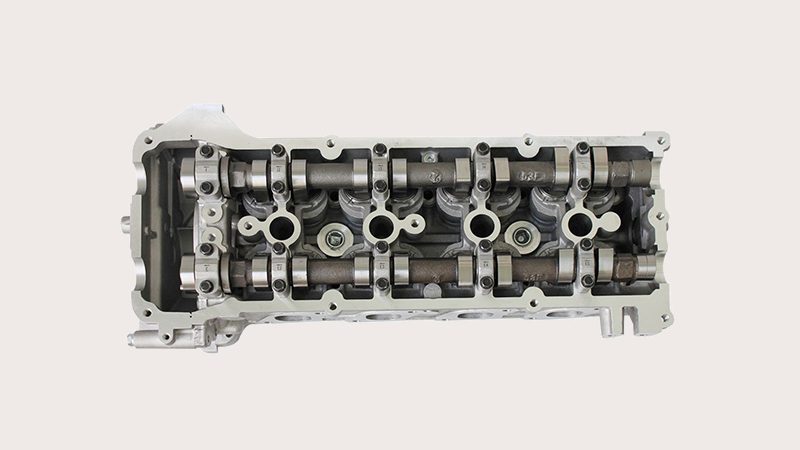
Repair vs. Replacement: Cracked Cylinder Head
1. Cost vs. Benefit Analysis:
Deciding whether to repair or replace a cracked cylinder head depends on a cost vs. benefit analysis. If the damage is minor, repairing the cylinder head may offer a cost-effective solution, saving you money while restoring engine function.
However, if the damage is extensive or repairs are only a temporary fix, replacing the cylinder head might be the more prudent choice. Replacing the head ensures long-term reliability, but it comes with a significantly higher upfront cost.
The key is to assess the severity of the damage and balance the potential for future repairs against the initial expense of replacement.
2. Other Related Costs:
Beyond the repair or replacement of the cylinder head itself, other related costs should be factored into your decision. This includes replacing the head gasket, which may have been compromised during the cracking process.
Additionally, you may need a coolant flush to remove any contaminants and restore proper engine cooling. Depending on the situation, other engine work—such as cleaning, resurfacing, or replacing worn seals—may also be necessary to ensure the engine is functioning at its best.
Preventing Cylinder Head Cracks
To prevent cylinder head cracks, regular maintenance is key. Make it a routine to regularly check your engine’s coolant levels and top them off as needed to maintain optimal cooling. Monitor engine temperature closely to avoid overheating, and stay on top of routine inspections for any signs of leaks or wear.
Timely maintenance can go a long way in catching potential problems before they escalate, helping your engine run smoothly and efficiently for years to come.
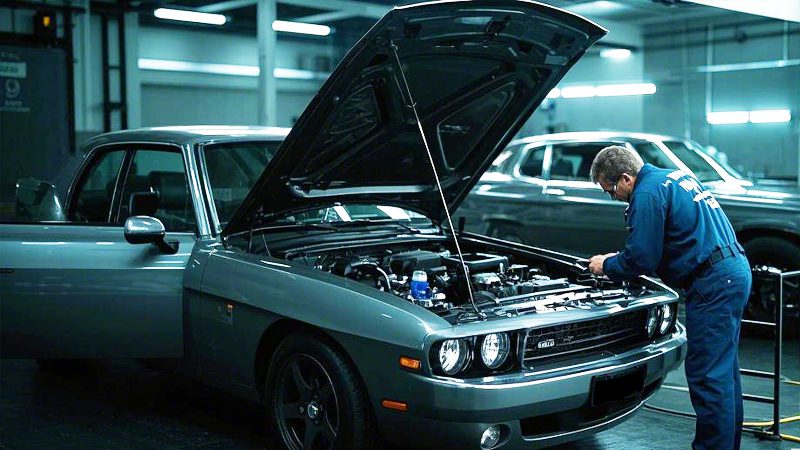
Conclusion
A cracked cylinder head is a serious issue that can severely affect engine performance, leading to coolant leaks, misfires, and even complete engine failure. In this article, we’ve discussed the symptoms of a damaged cylinder head, the common causes of cracking, and the available options for repair or replacement.
Early diagnosis and proper maintenance are key to preventing costly damage, and knowing when to seek professional help can save both time and money. Whether you opt for a repair or replacement, addressing the problem promptly is crucial for keeping your engine running smoothly.
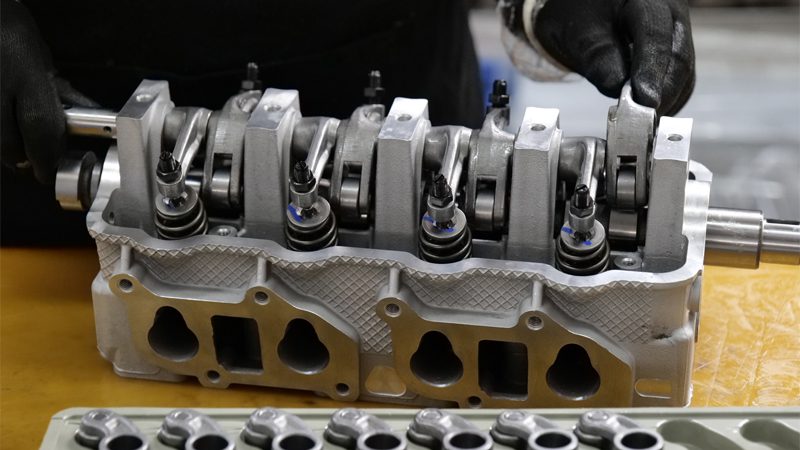
At Woda, we specialize in providing high-quality automotive engine parts, including durable cylinder heads designed to optimize engine performance. Our expert team is committed to helping you maintain your vehicle’s health, offering reliable solutions for all your engine-related needs.
Contact us today to learn more about how we can assist with your engine repair needs and keep your vehicle performing at its best.

